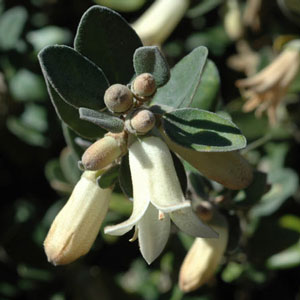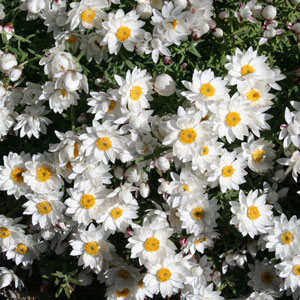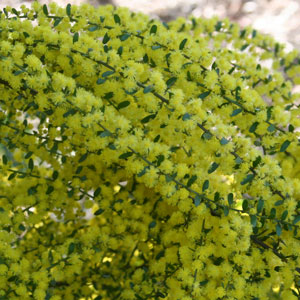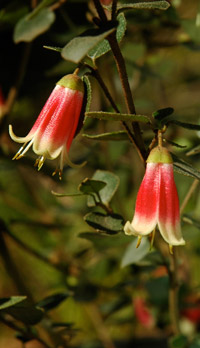SPRING FLOWERS IN THE GARDENS
Spring is peak flowering time at the Australian National Botanic Gardens. There is no better time to wander in and discover the beauty and diversity of Australia's plants.
Here we feature some flowers you can see this spring in the Gardens that may also inspire you to add colour to your Garden at home.
These plants are available in select nurseries and from Australian Native Plants Society sales at the Australian National Botanic Gardens in spring and autumn.
Information provided by Ros Walcott.
Correa 'Ivory Bells'
Correa ‘Ivory Bells’ produces many ivory tubular flowers with neat foliage of small dark green leaves.
This cultivar originated in San Francisco, USA . It is suggested to have come from a cross between Correa alba and Correa backhousiana.
Other small correas like this are Correa alba and Correa reflexa cream form.
SEE CORREA 'IVORY BELLS' IN FLOWER IN THE GARDENS this spring in Sections 112 on the Main Path, 124, behind the café, 240 opposite the Ellis Rowan Garden, 15d Rock Garden.
GROW IT AT HOME Correa 'Ivory Bells' forms a small dense shrub which grows to 1-2m x 2-3m. This cultivar is quite hardy under cultivation, particularly in moist, well drained soils in a protected position. However, it will tolerate full sun and extended dry periods once established. In common with most correas, C. 'Ivory Bells' is attractive to honey eating birds.
Image: APII
Rhodanthe anthemoides
Rhodanthe anthemoides is a perennial species of the daisy family Plants have grey leaves and white papery flowers with yellow centres on multiple stems rising from the base They occur naturally in eastern Australia from Queensland to Tasmania.
SEE RHODANTHE ANTHEMOIDES IN FLOWER IN THE GARDENS this spring in the Rock Garden sections 15d, 15m and 15s and the Western Mallee section 300
GROW IT AT HOME This shrub is a great addition and is becoming quite popular for home gardens. It flowers over a long period. It can reach 40 cm high and spread to 60 cm wide. Other small daisies are Brachyscome ‘White Delight’ and Leucochrysum albican. This species is becoming popular in cultivation. It is suited to temperate areas, preferably in semi shade and well drained soils.
Image: Ben Walcott
Acacia acinacea or Gold Dust Wattle
When this plant flowers in the spring it makes a brilliant display as it is totally covered with bright gold ball flowers. The foliage is small and close to the stem.
It is in demand in revegetation programs for its ability to pioneer degraded sites. It can be brittle in windy conditions. There are at least three different genetic races of this plant, so that results from seed can vary. It grows naturally in southeastern mainland Australia.
SEE ACACIA ACINACEA IN FLOWER IN THE GARDENS this spring in sections 211 in the Eastern Mallee and 15r in the Rock Garden.
GROW IT AT HOME Acacia acinacea is a medium sized shrub growing to 2m in height. It is generally adaptable and responds to sunny, reasonably well-drained positions in most soils. It will respond to light pruning after flowering. It is relatively long lived for a wattle (about 15 years) and is tolerant of drought and frost.
Other small wattles like this are Acacia flexifolia and Acacia genistifolia, but none make the showy display that Acacia acinacea makes in spring.
Image: Ben Walcott
Prostanthera phylicifolia
Besides its masses of beautiful purple-spotted white to violet flowers, Prostanthera phylicifolia is a beautifully fragrant mint bush that can excite the senses with its aromatic deep green leaves. It is long flowering in the garden from mid-spring through to mid-summer.
This plant occurs naturally in Queensland, NSW and Victoria.
SEE PROSTANTHERA PHYLICIFOLIA IN FLOWER IN THE GARDENS this spring in section 210 on the left near the Visitor Centre.
GROW IT AT HOME As a dense erect or spreading shrub 0.5m to 2m high, Prostanthera phylicifolia makes a great addition to a home garden.
Image: APII
![Director of National Parks [logo]](../../../images/dnp_90px.gif)






